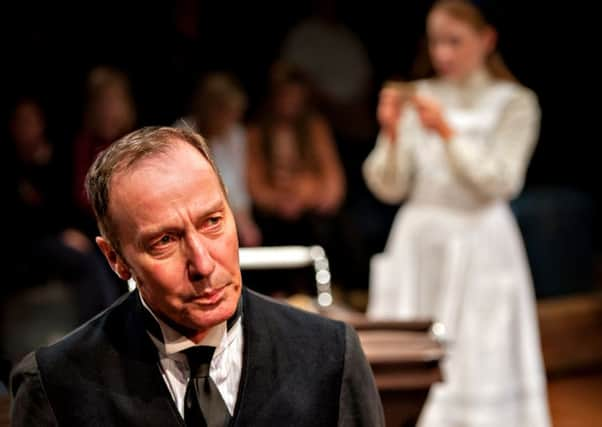The Railway Children book return ticket


York Theatre Royal has deftly side stepped any similar potential problems. The theatre is currently closed while it undergoes a £4.1m makeover. It’s difficult for an artistic director without a building, but Damian Cruden, the man in charge of the York Theatre Royal has come up with a creative solution. Move the theatre productions lock, rolling stock and barrel to somewhere else.
This year sees the relationship between Cruden’s theatre and the National Railway Museum notch up seven years. If there’s an itch in the relationship, it isn’t in evident. The honeymoon period appears to have been extended.
Advertisement
Hide AdAdvertisement
Hide AdIt was 2008 when Cruden first took the bold, adventurous and some might say a little fanciful step of collaborating with the museum. Few would have predicted the success that would follow.
Cruden, however, did. He saw that the classic story The Railway Children could be something really special if it could somehow incorporate a real locomotive. Getting one of those into a theatre which has sat on the site in York since 1744 was logistically impossible. So in 2008 Cruden took the theatre to the locomotive.
The Railway Children opened at the York museum, just down the road from the York Theatre Royal, in 2008. A total of 24,000 people saw the show and many more were disappointed to have not booked in advance – the last three weeks of the show’s run were entirely sold out.
It was a masterstroke that reverberated far outside of York. The highly regarded production travelled to Waterloo Station in London and then transferred to Toronto, Canada.
Now, the production is back.
Advertisement
Hide AdAdvertisement
Hide AdAnd it would appear to have returned with some extra steam behind it. The production, at the museum now until September, will feature the Great Western Railway Pannier Tank 5775. That might not mean much to you, but it is the steam locomotive used in the classic film. Even if you don’t spot trains for fun, that is still an impressive addition to the show.
Jim Lowe, head of operations at the National Media Museum, said: “We think audiences will love the latest adaptation of this wonderful production and will be as excited as we are to see Bobbie and her siblings reunited with the instantly recognisable Pannier Tank locomotive.”
That’s not the only impressive addition to this summer’s production. It will also be staged in the purpose built 1,000-seat Signal Box Theatre - the theatre where the audience watched the show in Canada when The Railway Children went to Toronto in 2011.
Cruden says: “It’s so lovely to be back here, there’s a circuitous quality about coming back to where it all started. It’s grown since we first did the show here in York – I think it’s a slightly more sophisticated show now so it’s great to be bringing it back home.
Advertisement
Hide AdAdvertisement
Hide Ad“There’s something about the show that makes it a little more understood here in Yorkshire than in the other places it has been.”
Despite being the runaway success for the theatre that it has become, Cruden admits that he didn’t realise what a hit he had on his hands when the show premiered at the venue to which it has returned, seven years ago.
“We only truly knew we had after the first performance. Until then it was difficult to say.”
After that first performance, however, Cruden admits that he realised there was something clearly very special about this show. In difficult times for the arts Cruden, always a great ambassador for the importance of public funding for the arts and making culture available to all, says that The Railway Children has a wider significance than just being a very good show that has been loved by thousands around the world.
Advertisement
Hide AdAdvertisement
Hide Ad“I think it demonstrates that work created by a regional theatre can very easily go beyond its own doorstep. It demonstrates that we can create work of excellence wherever we are and wherever you have a group of people working with passion and given the opportunity to express themselves creatively.”
For Cruden the success of The Railway Children is a huge fillip, but the success of creating work with the National Railway Museum has an even wider significance. Fully aware of the situation with the Sheffield Crucible a decade ago, he was determined that the theatre closing for a year would not mean out of sight, out of mind for the venue.
“The museum bought in to the idea of what we were hoping to do, which was absolutely key. One of our realities as a theatre is that if we had to close down and not continue producing, we would have lost staff. We have among the lowest funding of all National Portfolio Organisations, our funding doesn’t cover our wage bill, so without ticket sales we can’t keep all our staff on. Economically this was the only way we could keep all our staff on at the theatre.
“We were also conscious that when a theatre closes for a period for refurbishment, it can be difficult to keep the relationship with your audience, so those were the main drivers for us trying to ensure that we had somewhere to be and that we could keep producing work.”
So, a practical reason to keep the theatre open, but a practical reason that has had huge benefits for all – not least those who were unlucky not to climb aboard and get a ticket the last time.